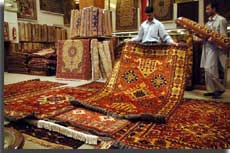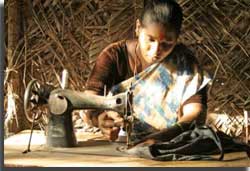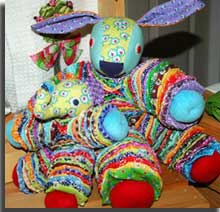| Size of the INDUSTRY | Spread all around the country with Textile, Cotton and other handicrafts items. |
| Geographical distribution | Rajasthan, Pune, Gujarat, Mumbai, Hyderabad, Bangalore |
| Output per annum | It accounts for more than 12 billion per annum |

Since ancient times in the country such indigenous products have always been able to attract foreign traders and merchants. These helped India in successfully establishing trade relations with the Greek, Chinese and Arab merchants. Even during the period of medieval India, Indian craftsmen and artisans flourished well under the rule of the Turk, Afghan and Mughal dynasties. But from the advent of the East India Company, there was a drastic change in the running of these cottage industries. For an urge to have more luxury items at the cheapest prices, the European traders and merchants exploited the Indian peasants to great extent due to which these cottage industries witnessed a severe lash to their production. Later the Industrial revolution in the West also gave a fatal blow to their economy and led to considerable decline in the number.
Although the Gandhji led 'Swadeshi' and the 'Boycott' movements helped in the promotion of khadi and other Indian fabrics, they could not help much in saving the decline in the manufacturing of the items that involved fine work as well as an artistic taste. Since 1947, after Indian independence there was a much-needed change that was introduced in the country for the improvement of the economic condition of India. As a consequence of which, the cottage industries were neglected again but later they became an integral part of India's five-year plans.
Since then today after several years of Indian independence, the contemporary condition of the small scale industries is under control more than ever before. They are operated with a joint co-operation of the public and the private sectors. Today every state in India has its own set of cottage industries whose art and craft items depict the traditional art form and the culture of that particular state.

Under the Government's Tenth Five-year Plan, the areas identified for the development of SSIs are Leather and Leather products, Textiles and Readymade Garments, Gems and Jewellery, Pharmaceuticals, Information Technology, Bio-Technology, Automobile Componenta, Food Processing, Coir Industries, etc.
Introduction of Market Development Assistance scheme (MDA), Entrepreneur Development Institute (E.D.I.), State Industries Centers - EDP Training, Women Entrepreneur Development Programme, Construction of DIC building, maintenance, contribution to specific fund (TTM), Assistance to Coir Industrial Co-operative Societies, assistance for setting up of Industries (Capital Investment Subsidy to SSI Units) etc, has made it possible for the cottage industries to flourish well.

Every region in our country abounds in beautiful handicrafts, handlooms, carpets, etc. Freedom Tree attempts to help keep some of these crafts in the limelight by sourcing its products from rural artisans and craftsmen across the country. It features Indian culture in a very unique way and helps preserve it by marketing products which are hand made.
Freedom Tree celebrates India though its vibrant and colourful designs. The Freedom Tree Design store's products have an impression of our cultural heritage imbibed into them that makes them unique. With its focus on promoting Indian craftsmanship, Freedom Tree Design store has a host of ceramic, textile and lacquer ware products that are all made in India and have a global appeal to them. The products are designed and made by hand, making each one a unique piece.
- Indian Cottage industries provide opportunity for the development of handicrafts in the country. In places like KONDAPALLI and NIRMAL hand- made toys are the main occupation for the people.
- The LEPAKSHI sarees are famous and dyeing is a prominent in the industry. In many villages match boxes are made all around the country. Carpets are also are part of cottage industries.
- With the advent of the British cottage industries in our country suffered a setback. Industrial revolution brought about a craze for goods made on machines. People depending on cottage industries lost their livelihood. After independence cottage industries are again encouraged. Government now provides the needed financial assistance to these. Product of cottages industries are sold through special counters like the LEPAKSHI stalls.
 Recent Press Release
Recent Press Release
 INDIAN cottage Industry AT A Glance IN 2019 - 2020
INDIAN cottage Industry AT A Glance IN 2019 - 2020
 INDIAN cottage Industry AT A Glance IN 2018 - 2019
INDIAN cottage Industry AT A Glance IN 2018 - 2019
 INDIAN cottage Industry AT A Glance IN 2017 - 2018
INDIAN cottage Industry AT A Glance IN 2017 - 2018
 INDIAN cottage Industry AT A Glance IN 2011 - 2012
INDIAN cottage Industry AT A Glance IN 2011 - 2012
Indian Industries


